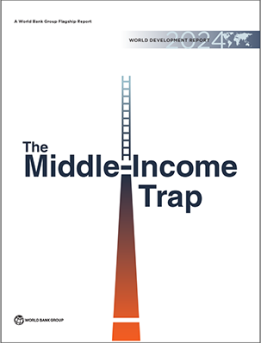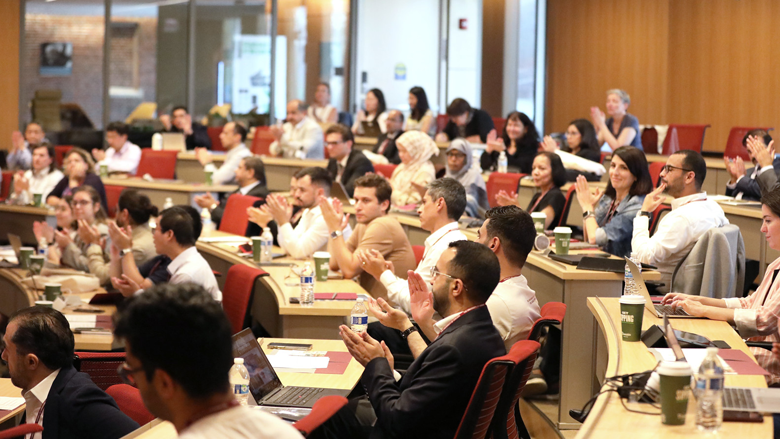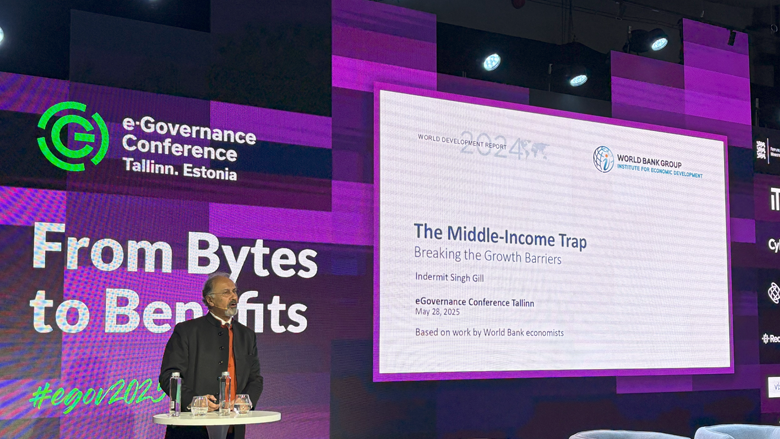Middle-income countries—home today to 6 billion people—are in a race against time. Many have set ambitious deadlines for themselves: reach high-income status within the next two or three decades. That will not be easy. Since the 1990s, only 34 middle-income economies have succeeded in that feat. The rest—108 at the end of 2023—have been stuck in “the middle-income trap”. Since 1970, the median income per capita of middle-income countries has never risen above 10 percent of the US level.
Climbing to high-income status in today’s environment will be harder still—because of high debt and aging populations in developing countries and growing protectionism in advanced economies. World Development Report 2024: The Middle-Income Trap outlines how all developing economies can avoid the middle-income trap.
Use AVA (ai), our AI-powered research tool, to start interacting with the report:
Featured Content
Explore our curated insights, events, and learning opportunities on the topic of growth in middle-income countries.
Key Policy Messages
This section summarizes the high-level policy messages from The Middle-Income Trap. Click on each card to read more.
Low-income countries can focus solely on policies designed to increase investment—the 1i approach.

Low-income countries can focus solely on policies designed to increase investment—the 1i approach.
Countries growing out of low-income status into middle-income status tend to have a 1i strategy for accelerating investment. They should:
- Improve the investment climate to increase domestic and foreign investment.
- Invest in human capital by broadening foundational skills and improving learning outcomes.
- Increase investment in expanding access and grid networks.
- Reform regulatory frameworks to attract private investment and ensure fair competition.
Lower-middle-income countries must expand the policy mix to a 2i approach—investment + infusion.

Lower-middle-income countries must expand the policy mix to a 2i approach—investment + infusion.
Lower-middle income countries should:
- Discipline market leaders through integration into globally contestable markets; diffuse global technologies; and reward value-adding firms.
- Discipline elites by providing equal opportunities for women and disadvantaged groups; allocate talent to task; develop links within academia; and allow emigration of educated workers whose skills are not valued in domestic markets.
- Discipline SOEs by hardening budget constraints; advocate for advanced economies to ease protection of domestic incumbents; boost energy efficiency; and reflect environmental costs in energy prices.
Upper-middle-income countries need to shift gears yet again, to a 3i strategy: investment + infusion + innovation.

Upper-middle-income countries need to shift gears yet again, to a 3i strategy: investment + infusion + innovation.
Upper-middle-income countries should:
- Deepen capital markets and expand equity financing; strengthen antitrust regulation and competition agencies; and protect intellectual property rights.
- Strengthen industry-academia links domestically; expand programs to connect with diaspora in advanced economies; and enhance economic and political freedoms.
- Lower the cost of capital for low-carbon energy by reducing risks involving technology, markets, and policy; and increase multilateral finance for very long-term investments.
Countries should capitalize on crises as opportunities to modernize policies and institutions.

Countries should capitalize on crises as opportunities to modernize policies and institutions.
Cheap, reliable energy has long been a cornerstone of rapid economic development. But prospering while keeping the planet livable will now require paying greater attention to energy efficiency and emissions intensity. Climate change and other exigencies can provide opportunities to forge the consensus needed for tough policy reforms.
Countries that have made speedy transitions from middle- to high-income status have disciplined domestic vested interests.

Countries that have made speedy transitions from middle- to high-income status have disciplined domestic vested interests.
Powerful incumbents—large corporations, state-owned enterprises, and powerful citizens—can add immense value, but they can just as easily reduce it. Governments must devise mechanisms to discipline incumbents through competition regimes that encourage new entrants without either coddling small- and medium-size enterprises or vilifying big corporations.
Countries should reward merit to build their talent pool.

Countries should reward merit to build their talent pool.
Middle-income countries have smaller reservoirs of skilled talent than advanced economies and are also less efficient at utilizing them. So they will have to become better at accumulating and allocating talent.















